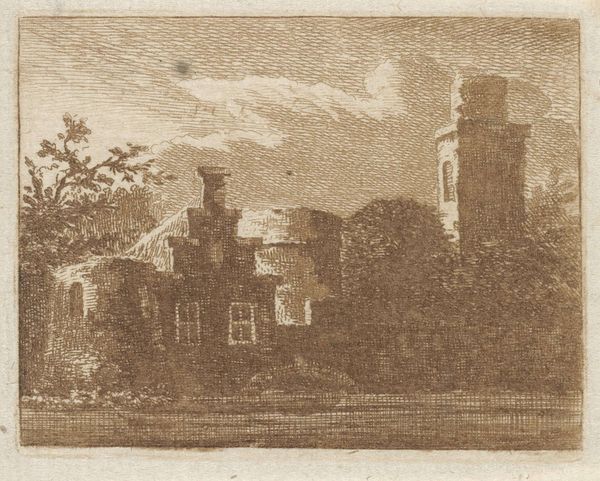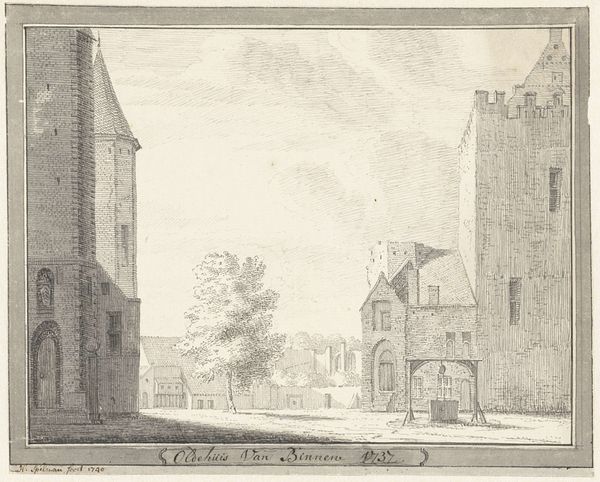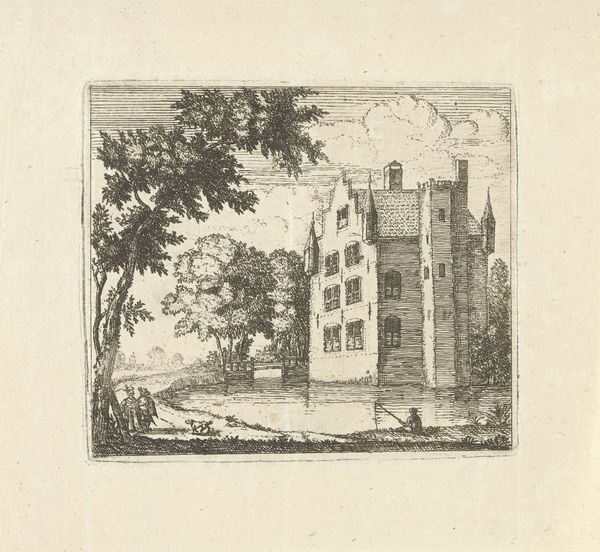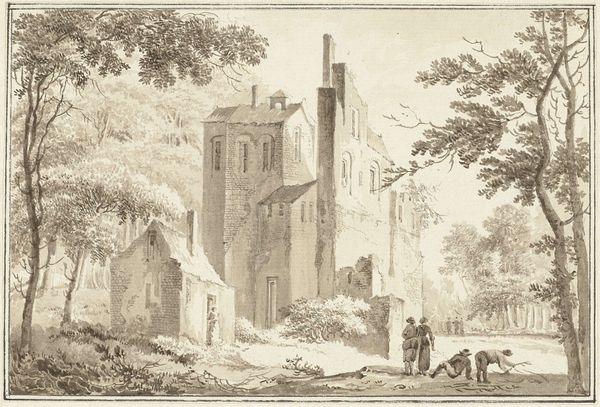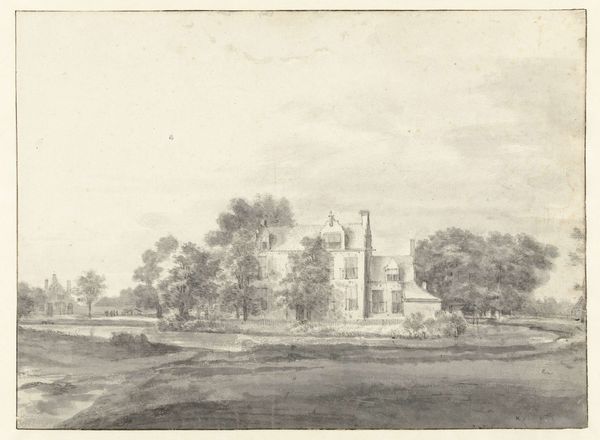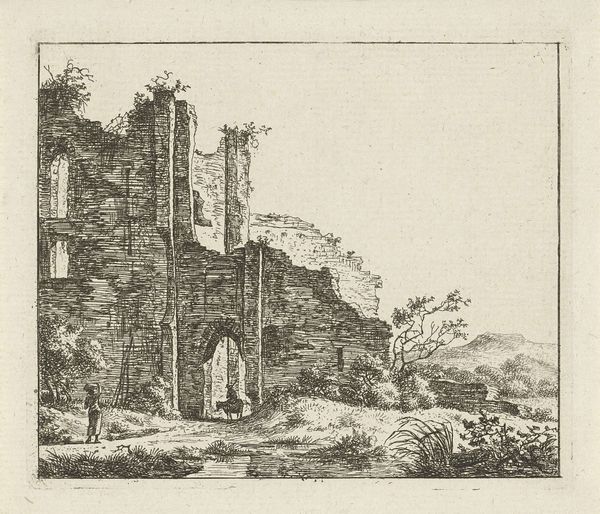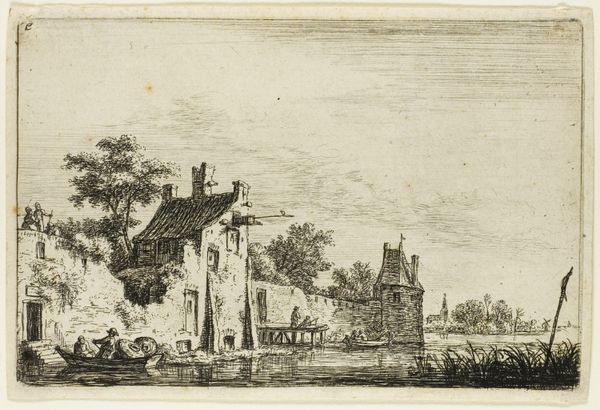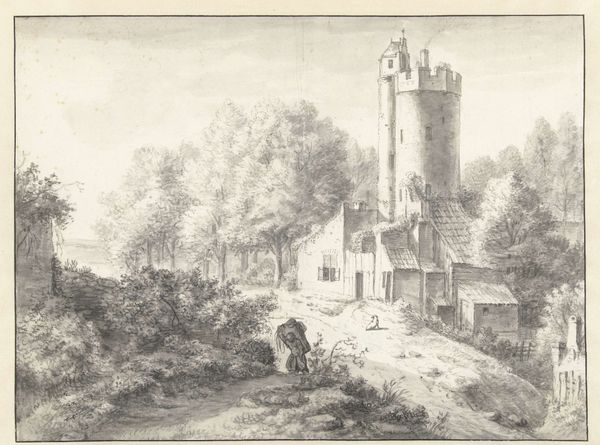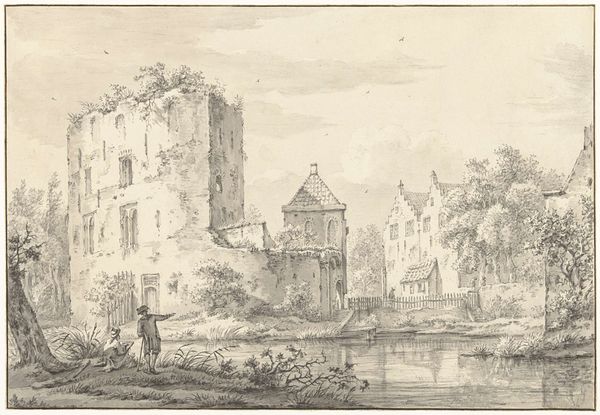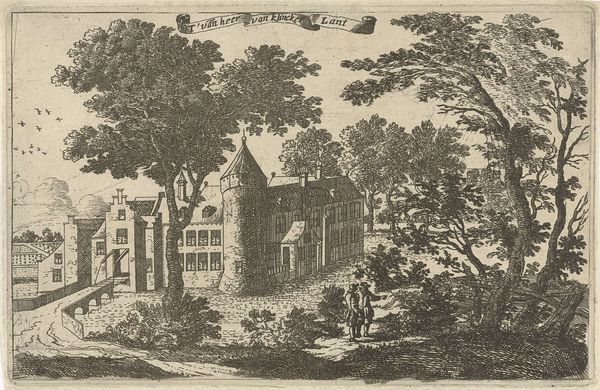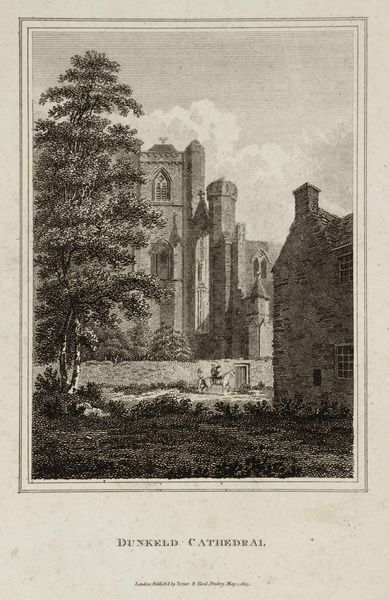
#
aged paper
#
light pencil work
#
pen sketch
#
pencil sketch
#
old engraving style
#
sketch book
#
personal sketchbook
#
pen-ink sketch
#
pen work
#
sketchbook drawing
Dimensions: height 52 mm, width 66 mm
Copyright: Rijks Museum: Open Domain
Editor: So, this is “Gezicht op huis met trapgevel,” or “View of a house with a stepped gable,” by Caspar Jacobsz. Philips, created in 1766. It’s currently held at the Rijksmuseum. It seems to be pen and ink on paper, almost like a quick sketch. The detail is pretty fascinating; there are so many small lines making up the forms. What's striking to you about this piece? Curator: What I find compelling here is the artist's deployment of line and texture to articulate form and space. Notice how Philips uses closely packed, parallel lines to create areas of shadow, giving weight and volume to the architectural forms. The strategic contrast of these dense areas with the sparse, almost ethereal lines representing the sky establishes a powerful dynamic within the composition. Editor: It almost looks like two different sketches stitched together. Curator: Observe how the linearity becomes a crucial element here, defining the spatial relationships. The varying densities of the line not only model the forms but also suggest depth. Consider the stark contrast between the precisely rendered foreground and the more atmospheric handling of the background, does it strike you as deliberate, maybe a technique to enhance the perspectival illusion? Editor: It does! The precision gives the house a solid feel while the background almost fades into nothing. I'm starting to appreciate how much information Philips conveys with such simple lines. Curator: Precisely. The reduction to essential lines forces us to engage actively in constructing the image, filling in the gaps, you might say. How would you say that the medium affects your perception of the subject matter? Editor: I think the limitations of the medium force you to really understand the architecture in order to accurately portray it with simple lines, which is also why I get that sketchbook feel. It looks very planned yet somehow spontaneous. I never really thought about sketches as serious art, but there is definitely a craft to this. Curator: Indeed, the intersection of intentional design and perceived spontaneity underscores the essence of the artistic process, isn’t it? Thank you for those observations.
Comments
No comments
Be the first to comment and join the conversation on the ultimate creative platform.
